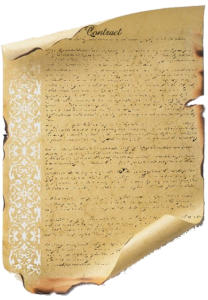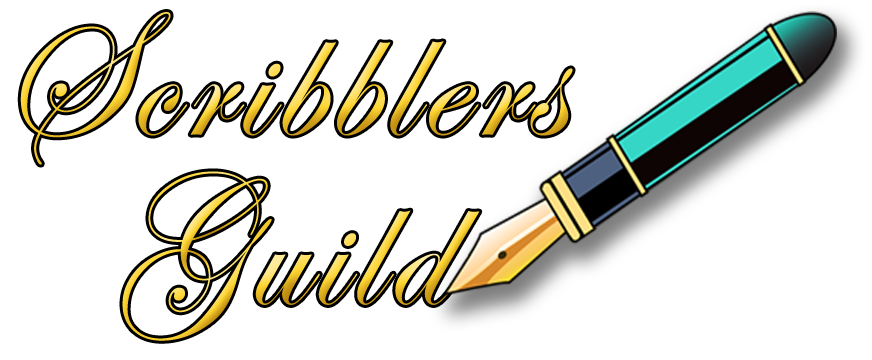Essay Series – Implied Contract
Part One — The Implied Contract
 Last year, I wrote a post on How to Focus a Blog Post, but since then, I’ve received a number of further questions, so it seems there are more answers to be explored.
Last year, I wrote a post on How to Focus a Blog Post, but since then, I’ve received a number of further questions, so it seems there are more answers to be explored.
For the month of July, I’ll be concentrating on a series about creating short pieces that engage and impact the reader. We’ll cover the implied contract between writer and reader and how it determines what you write, the essay structure and how it applies to short stories, personal memoirs and blog posts, and we’ll cover blog posts and the proper way to present an argument. We’ll go through a series of questions and exercises to help you create more focused and convincing arguments, messages and stories.
The Implied Contract
Writing is not done in a vacuum. There are two people involved in this conversation symbolized by the written word — the writer and the reader.
For writing to be effective, it must have a point. No matter how beautiful the language you craft, if there’s no topic, no subject, no underlying message, no point to your work, it’s all just pretty words and no one but you, the writer, will care.
There’s a difference between what we write for ourselves and what we write for others. When we write for our own satisfaction, amusement or simply as memory joggers, it doesn’t much matter how we put the words together because we already know the point we’re trying to make. Even if we wander around and never reach a conclusion, it’s of no consequence, because the point is the writing itself — a self-indulgent guilty pleasure that doesn’t hurt anyone.
A Different Story
But when we write for others to read, it’s quite literally a different story. Our focus becomes a direct communication between ourselves and our readers, so we must state our thoughts as clearly as we can. Nobody can read our minds, so our readers can’t possibly know what we take for granted as background information, what we assume “everybody knows” as unspoken filler and as backstory.
 For example, suppose we live in the northern hemisphere of North America and we write about the dangers of poison ivy. There are millions of readers in the world who’ve never encountered poison ivy, so we need to be precise in our description of it — its appearance, its environment and its effects on people. When we read other writers’ stories of exotic locations, those locations are not exotic to the people who live there.
For example, suppose we live in the northern hemisphere of North America and we write about the dangers of poison ivy. There are millions of readers in the world who’ve never encountered poison ivy, so we need to be precise in our description of it — its appearance, its environment and its effects on people. When we read other writers’ stories of exotic locations, those locations are not exotic to the people who live there.
It’s the same with us. We’re very familiar with our own environment, but others are not, so it’s important for us to try to think like our readers. What do they know? What do they not know? What are the details that will help them understand our context?
Writing for readers is a two-way conversation. We may be writing it, but someone’s going to be reading it. It’s all too easy to get so immersed in telling our own story that we forget that we’re not alone in this endeavour. We need to make the process as easy and enjoyable as possible for our conversational partner, our reader.
It’s critical that we think of our story from the reader’s point of view. Why would they want to read it? What do they get out of it? We must have a goal for them in mind, right from the beginning.
Our goal could be as simple as providing a good read, an escape tale for a lazy day at the beach, or as complicated as getting them to change their opinions about a political stance, cultural or religious point of view or an unconventional value judgement. But what is the reader’s goal in reading it? The conversation must be understood by both parties.
Storytelling is an unspoken contract between the writer and the reader, and, both in fiction and in non-fiction, there are fundamental conventions that determine what good storytelling is. So let’s think about one of these conventions for a moment — the overarching question.
The Writer’s Promise
Good storytelling requires an implied or overt promise from the writer, which the reader accepts as the basis of the story’s conflict, points of argument and narrative drive. At the beginning of any narrative, the writer asks a question, states a controversial opinion or otherwise creates curiosity in the mind of the reader. It could be any one of dozens of debates, uncertainties or arguments, but inevitably, it comes down to: “What happens?” The question may not be overt, but it must create a spirit of inquiry and a desire to read on.
The story question must have some relevance for the reader, in the form of some kind of change. In fiction, what’s required is a character’s action and conflict, and in non-fiction, it’s intellectual stimulus and development that engages readers. If nothing happens, it’s not a story. It may be a beautiful description of setting, character or intellectual concept, but if there is no change, there is no story.
The Reader’s Trust
 The other side of this two-way conversation is an offer of trust by our readers. They trust us to answer the question, resolve the issues, and put an endpoint to the story. Anything less may be construed as a violation of that implied trust.
The other side of this two-way conversation is an offer of trust by our readers. They trust us to answer the question, resolve the issues, and put an endpoint to the story. Anything less may be construed as a violation of that implied trust.
How often have you felt annoyed after reading a story that concluded, “and then she woke up. It was all a dream”? Or an op-ed piece in which the writer dithered around and never got to the point? When a writer offers readers a cop-out or simply a boring narrative, it’s a breach of trust.
A good story provides the reader with a transformation, a change, a sense of satisfaction and time well spent. We offer a good story or relevant information, the reader offers the time it takes them to read it. It’s a conversation and a negotiation, an intellectual transaction between ourselves and our readers.
So, no matter whether we’re writing a short story, a memoir, a news article, a formal essay for our graduate thesis, or a “How I Spent My Summer Holiday” blog entry, there are certain aspects of the writing which must be included if it’s to be read and appreciated by readers other than ourselves.
Next week, we’ll cover one of the main structural principles behind most forms of modern writing — the essay.
Essays are those things we dreaded having to write in school in order to get a passing grade, a piece of writing that gives the author’s own argument. And even though we hated them at the time, the rules governing the essay can be used in short stories, memoirs, blog posts, news articles and even tweets. When done right, this format can make any piece of writing more effective.
Exercise:
What is your ideal outcome as an author?
- Make the reader understand your viewpoint, create change, honour an act of courage, etc.
- What is the ideal outcome for your reader?
- What transformation or change will your reader have as a result of reading your article, book or story?
- What emotions do you want them to feel?
- What is the promise you make to your reader? Is it implied or overt?
- Examples: A good read, intellectual stimulation, insight & understanding
- Is there an overall question that must be answered?
- If so what is it?
- If not, what could it be?
- What is the point of your story, the conclusion you want your reader to reach?
If you’d like more on this topic, let me know in the comments. I’d love to hear from you.
Happy Writing,

Beverley Hanna
Trained as an artist in the late 1960’s and early 1970’s, I was one of the first creatives to be employed in the computer graphics industry in Toronto during the early 1980’s. For several years, I exhibited my animal portraiture in Canada and the U.S. but when my parents needed care, I began writing as a way to stay close to them. I’ve been writing ever since. I run a highly successful local writer’s circle, teaching the craft and techniques of good writing. Many of my students have gone on to publish works of their own. I create courses aimed at seniors who wish to write memoirs, with a focus on the psychology of creatives and the alleviation of procrastination and writer's block.


3 Comments
Pingback:
Pingback:
Pingback: